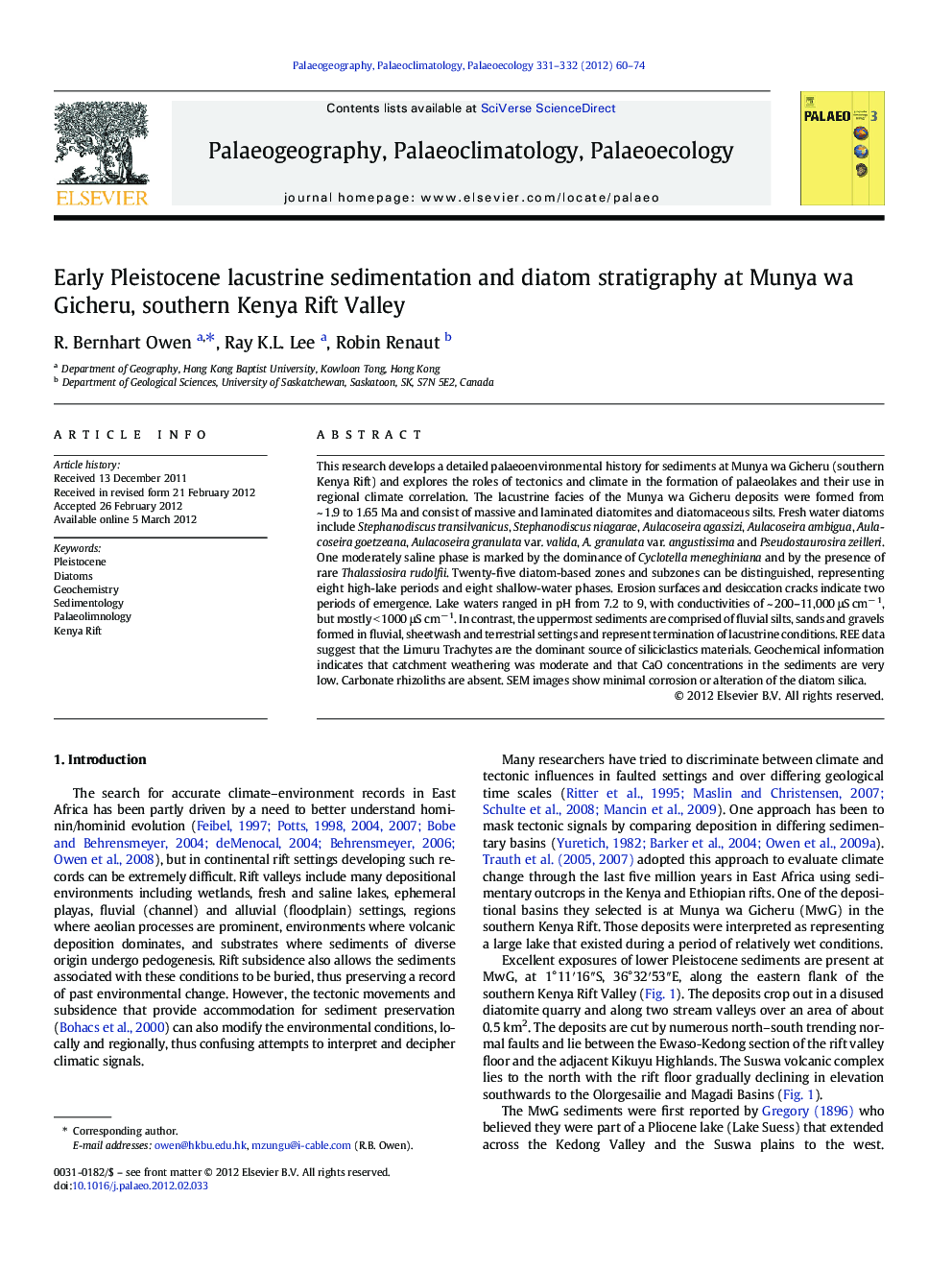| کد مقاله | کد نشریه | سال انتشار | مقاله انگلیسی | نسخه تمام متن |
|---|---|---|---|---|
| 4466929 | 1622234 | 2012 | 15 صفحه PDF | دانلود رایگان |

This research develops a detailed palaeoenvironmental history for sediments at Munya wa Gicheru (southern Kenya Rift) and explores the roles of tectonics and climate in the formation of palaeolakes and their use in regional climate correlation. The lacustrine facies of the Munya wa Gicheru deposits were formed from ~ 1.9 to 1.65 Ma and consist of massive and laminated diatomites and diatomaceous silts. Fresh water diatoms include Stephanodiscus transilvanicus, Stephanodiscus niagarae, Aulacoseira agassizi, Aulacoseira ambigua, Aulacoseira goetzeana, Aulacoseira granulata var. valida, A. granulata var. angustissima and Pseudostaurosira zeilleri. One moderately saline phase is marked by the dominance of Cyclotella meneghiniana and by the presence of rare Thalassiosira rudolfii. Twenty-five diatom-based zones and subzones can be distinguished, representing eight high-lake periods and eight shallow-water phases. Erosion surfaces and desiccation cracks indicate two periods of emergence. Lake waters ranged in pH from 7.2 to 9, with conductivities of ~ 200–11,000 μS cm− 1, but mostly < 1000 μS cm− 1. In contrast, the uppermost sediments are comprised of fluvial silts, sands and gravels formed in fluvial, sheetwash and terrestrial settings and represent termination of lacustrine conditions. REE data suggest that the Limuru Trachytes are the dominant source of siliciclastics materials. Geochemical information indicates that catchment weathering was moderate and that CaO concentrations in the sediments are very low. Carbonate rhizoliths are absent. SEM images show minimal corrosion or alteration of the diatom silica.
► Palaeolake Munya wa Gicheru deposits can be divided into 25 diatom zones.
► pH varied from 7.2 to 9 with conductivities of 200–11,000 μS cm− 1, mostly < 1000 μS cm− 1.
► 8 high and 8 shallow lake phases; 3 emergent periods; climate cyclicity.
► CaO and corrosion of diatom silica conform with southward rift chemical gradient.
► Palaeolake confined to east rift; reflects climate, tectonic and geomorphic controls.
Journal: Palaeogeography, Palaeoclimatology, Palaeoecology - Volumes 331–332, 1 May 2012, Pages 60–74